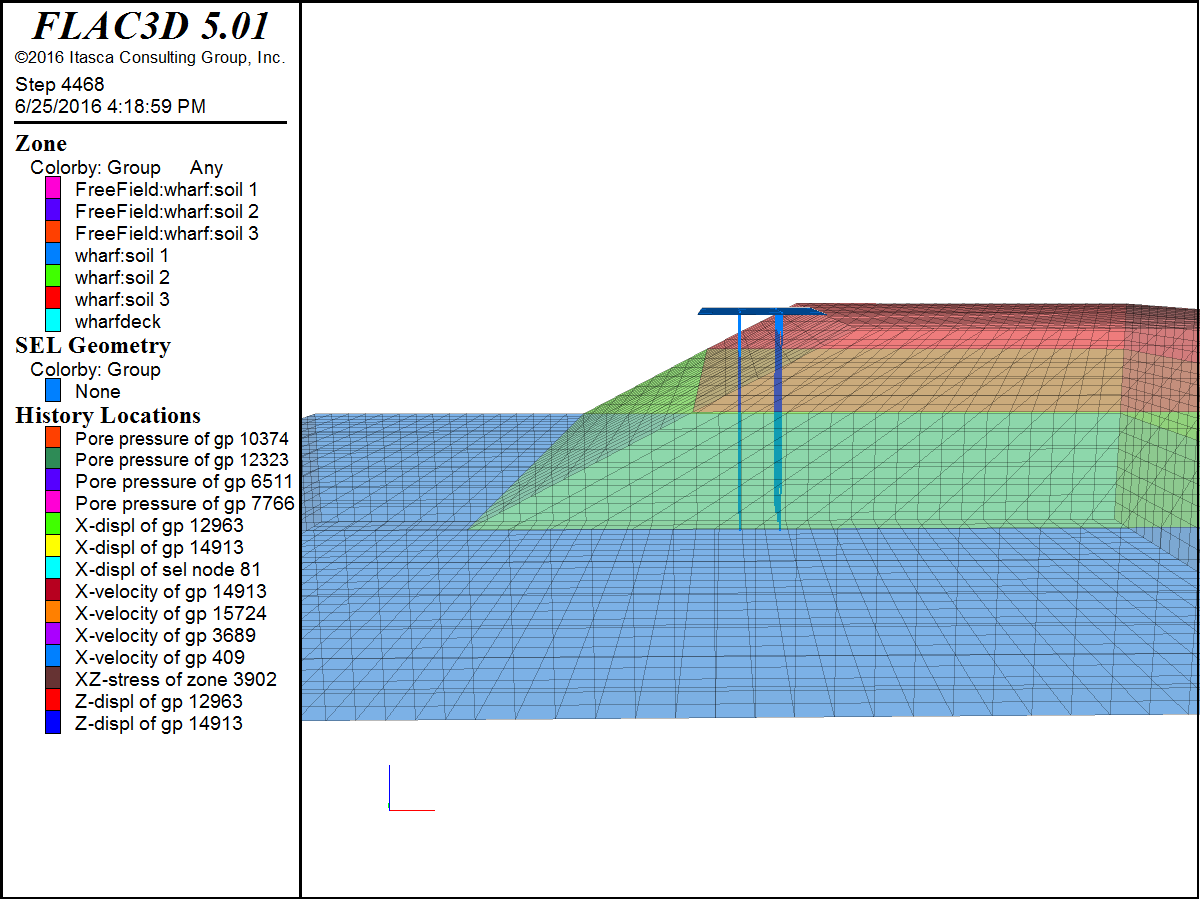

The results showed that the GRRB can be successfully used as a sustainable and cost-effective replacement for virgin aggregate bases. Finally, an LCA-LCCA framework was developed to assess the sustainability of the pavement infrastructure using a sustainability index. This analysis considered agency, user, environmental, and health impact costs incurred during the service life of the pavement section. The validated FD model was then used to perform parametric studies to assess the factors affecting the performance of geocell-reinforced bases.Īdditionally, a life-cycle assessment (LCA) and life-cycle cost analysis (LCCA) were performed to estimate the current and future cost of the pavement section with GRRB. The unreinforced and reinforced FD models were validated with experimental results and a good agreement between both was observed.
#PAVEMENT MODELING IN FLAC3D SOFTWARE#
These models were developed in FLAC3D (special character) software by employing finite-difference (FD) approach. Numerical models of the GRRB sections were developed to assess the load transfer mechanism of geocell reinforcement under static and dynamic loading. Test results showed that the HDPE geocell layer increased the Mᵣ and reduced the PD of the RAP base layer when compared to URB. Thanks to the ability to import the midas GEN structural model into FLAC 3D, it has been possible to consider its real stiffness which resulted in predictions of negligible differential settlements and significant cost savings. The performance of the geocell reinforcement was evaluated based on various parameters including bearing capacity (q), elastic deformation (ED), PD, resilient modulus (Mᵣ), traffic benefit ratio (TBR), and rut depth reduction (RDR). The FLAC3D model was also validated by comparison with a 'simplified' model based on the Boussinesq approach. In this dissertation research, several large-scale static and repeated load tests were performed on the unreinforced RAP base (URB) and geocell-reinforced RAP bases (GRRB) over clay subgrade. The main objective of this study is to assess the efficacy of high-density polyethylene (HDPE) geocell reinforcements in enhancing the strength and stiffness properties of RAP bases and for mitigating PD behavior. Utilization of mechanical stabilizers, such as geocell, for stabilizing RAP bases, have found to be effective in improving the pavement performance. However, the low shear strength and high permanent deformation (PD) of RAP materials often limit their application in road bases. The use of RAP materials in pavement construction reduces natural resources depletion and the volume of construction debris discarded into the landfills. The procedure and method of implementing an interface constitutive model into a commercial computer program also provide a reference for implementation of a new interface constitutive model in FLAC 3D.Reclaimed asphalt pavement (RAP) materials have been considered as one of the most sustainable and cost-effective options in the pavement industry. The results confirmed the validity and reliability of the improved interface model. Results of the numerical tests show good agreement with the results obtained from theoretical calculations, indicating that the model incorporated into FLAC3D can simulate the nonlinear strain-softening behavior of interfaces involving geosynthetic materials. A numerical simulation of a direct shear test for geosynthetic interfaces was conducted to verify that the interface model was implemented correctly. In order to simulate the strain-softening characteristics of interfaces, a nonlinear strain-softening interface constitutive model was incorporated into fast Lagrange analysis of continua in three dimensions (FLAC 3D) through a user-defined program in the FISH environment. Due to the complexity of soil-structure interaction, simple constitutive models typically used for interface elements in general computer programs cannot satisfy the requirements of discontinuous deformation analysis of structures that contain different interfaces.


 0 kommentar(er)
0 kommentar(er)
